Book Extensions for the Florida Reading Association
2005-2006 Children’s Book Award
|
Ellison the Elephant | Henry Works |
I Wanna Iguana |
Knockin’ On Wood |
| Perfect Man |
Pumpkins | Stick Kid |
Winter’s Gift |
Ellison the Elephant
by Eric Drachmann
 Summary Summary
This is the story of an elephant that can’t trumpet like the other elephants.
With encouragement from his imaginary friend Weasel, he eventually finds his
voice. His resonance is jazzy and all the other animals delight in his new
sound. The book has a companion CD with original jazz music and a fanciful
narration.
Activities
- Use this book to identify story elements. Make a graphic organizer where
the students write the Title, Author, Characters, Problem, Setting, and Moral.
To jazz it up, make the organizer with open musical notes.
- Focus on identifying the story’s problem. As you read the story, stop on
the page where Ellison is pulling the tree. Then ask the students…
1. Who is the main character?
2. What is the problem in the story?
3. Do you think Ellison will solve the problem?
4. How will he solve the problem?
5. What might happen if he does not solve the problem?
6. If you were Ellison, how would you solve the problem?
- To extend the previous idea, turn the questions into a planning sheet to
help students write their own ending to Ellison the Elephant. Then have
them listen to the rest of the story and compare their version to the story’s.
- Use this story to have students make a book cover depicting the sequel to
Ellison the Elephant. Have them include a title and picture. Have older
children also write a book jacket synopsis of the sequel.
Websites
http://www.kidwick.com/ellison.html - this
is the publisher’s website. You will find an audio demonstration of the book and
information about the author.
http://www.elephants.com/curr.htm
- this site has a nice pdf file with curriculum on elephants. It
includes pictures, puzzles, and fun activities. There is also a plethora
information about rescued elephants including video.
Henry Works
by D. B. Johnson
 Summary Summary
The Henry in Henry Works is Henry David Thoreau. This book is the
fourth in a series of books based on Thoreau’s life and work. Henry David
Thoreau was a writer who gathered his ideas and inspiration from the world
around him. His friend Ralph Waldo Emerson wrote, "The length of [Henry's] walk
uniformly made the length of his writing.
If shut up in the house, he did not write at all." In the story Henry the
bear goes for a walk and encounters friends and all the inspiration he needs to
tell a story.
Activities
- After reading the book, have the class work together to make a story map
of the book. Think of some of the places Henry visited and have cooperative
groups draw one place, color and cut out the picture. Glue the pictures onto a
large sheet of paper. Sequence Henry’s travels by drawing arrows from the
first place he visits, to the second, continuing on until you come to Henry’s
last stop.
- Henry keeps a journal of what he sees and what he feels. Your students can
do the same. With your students' journals in hand, take a trip to your local
nature preserve or even your schoolyard. Walk the paths. Sit and think. Take
in the sights, noises, and smells. Experience what nature has to offer. Then,
the children should go to work, just like Henry, and write about the nature
they see and the thoughts that come into their minds. Put their writings
together into a class journal titled "Thoughts on a Nature Walk.”
- On Henry's walk to work, he helped his neighbors: Mrs. Hosmer, the
postmaster; Emerson; Mrs. Alcott; and Mrs. Hawthorne. He also put a crossing
stone in place in the river and watered the milkweed in the field. Your
students can do things for their school, neighbors and community such as
making posters to hang around campus encouraging everyone to keep the campus
neat and clean and to pick up litter, weeding a school garden or planting a
garden.
- Have students write about an outdoors experience they have recently had-
playing soccer, taking a walk, etc. Have the students describe the event in
poetry or prose.
Websites
http://www.houghtonmifflinbooks.com/readers_guides/henry/works.shtml#about
– this is the publisher’s site. You will find a very nice teacher’s
guide to accompany all the books in the series. Click on printer friendly
version to find the pdf file.
http://www.henryhikes.com/frames.html - this
is the author/illustrators website. It has a wonderful on-line version of the
story and information about the other three books in the series.
I Wanna Iguana
by Karen Kaufman Orloff
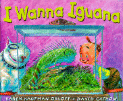 Summary Summary
Alex and his mother write notes back and forth to each other as he tries to
persuade her to let him get a pet iguana. Alex uses his powers of persuasion as
he and his mother have a funny and clever debate about him having a pet iguana.
Activities
- Have students write a note from the iguana’s perspective about being
Alex’s pet. Explain why the iguana would or would not want to be Alex’s pet.
- Research iguanas, geckos and chameleons. Create a class diagram, comparing
and contrasting the three.
- Create a Reader’s Theatre from the story.
- Visit a local pet store to learn more about iguanas-write thank you notes.
- Make a classroom chart or graph of their family pets.
Websites
http://www.thewildones.org/Animals/iguana.html -
this site has a wealth of information on iguanas and iguana care. There is also
a neat art project and related vocabulary.
Knockin’ On Wood
by Lynne Barasch
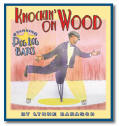 Summary Summary
An inspirational biography of Clayton "Peg Leg" Bates (1907–1998), an African
American man who overcame the hardship of losing a leg at age 12 and went on to
become a world-renowned tap dancer.
Activities
- Have students identify events in the story that have a cause and
effect. For instance, when Clayton Banks is not allowed to eat at
restaurants and stay at hotels, so he decides to open his own hotel. Use a
graphic organizer to complete the activity.
- Have students identify the genre called biographies. Tell them that
Knockin’ On Wood is a biography. Use this book to guide students in
making their own biographies about someone they know who has overcome
adversity.
|

|
Websites
http://www.leeandlow.com/books/knockin.html -this
is the publisher’s website. There is a sample of the book and reviews.
http://www.lynnebarasch.com
– this is the author’s website
Perfect Man
by Troy Wilson & Dean Griffiths
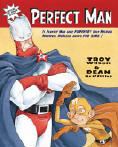 Summary Summary
This is the story of how a superhero named “Perfect Man” enters retirement as
a teacher, but the only one who knows of his secret new life is his biggest fan,
Michael Maxwell McCallum. Michael learns that his own super powers are his gift
for writing.
Activities
- Have students identify characteristics of a hero. Then give students a
graphic organizer that helps them create their own superhero. On the organizer
have students identify the superhero’s name, what makes him/her super,
physical description, gadgets, brief history, and what kind of problems he
solves. Finally, have the students use the graphic organizer to create a story
or comic strip depicting their new superhero.
- Compare and contrast heroes and superheroes. Discuss how Perfect Man and
Mr. Clark are alike and different. Use a Venn diagram.
Websites
http://www.troywilson.ca
– this is the author’s website. Learn about Troy Wilson and his new
book.
http://www.deangriffiths.com
– this is the illustrator’s website. It has a some pictures from
the book and contact information.
http://www.education-world.com/a_lesson/00-2/lp2289.shtml
- use this site to find a lesson plan using a superhero dictionary
http://www.teachartathome.com/ComicStrip.html -
use this site to get directions on making a comic strip. There are examples.
http://www.readwritethink.org/materials/comic/index.html
- this is an online comic strip designer. Excellent site from
ReadWriteThink.
Pumpkins
by Jacqueline Farmer
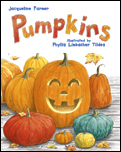 Summary Summary
Jacqueline Farmer presents a history of pumpkins, how they grow, where the
name jack-o-lantern came from, why we carve jack-o-lanterns, and recipes using
pumpkins.
Activities
- Write a class recipe for your own pumpkin pie or soup and try making it.
- Have students write the directions for carving a pumpkin. Carve a pumpkin
and discuss what steps were omitted or included out of sequence.
- Have students complete the story, “One day I found two pumpkin seeds…”
- Make a class list of the sequence of the life cycle of a pumpkin. Have
students make a book by writing one step per page and illustrating it.
- Plant pumpkin seeds in a plastic baggie with a wet paper towel. Record the
changes in the seed as it sprouts.
- Make a class book of “Pumpkin, Pumpkin, What Do You See?”
Websites
http://www.teachers.net/lessons/posts/202.html -
great songs about pumpkins and harvest, no Halloween.
http://www.charlesbridge.com/msp/catalog/product/detail.do?id=10900
– this is the publisher’s site for the book. You can download a
pumpkin coloring sheet here.
http://www.robinblackburn.com/halloweenresources.htm
- this site has a neat PowerPoint about the pumpkin life cycle.
Stick Kid
by Peter Holwitz
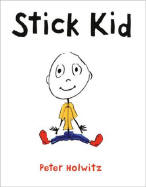 Summary Summary
“Two eyes and a push-up nose. Ten little fingers and ten little toes. Just a
stick kid, a quick little stick kid...” Until that stick kid starts to grow. And
change. And before you know it, your little stick kids isn't so little. He isn't
even a kid anymore. But he is still yours. And in your heart, he'll always be
your kid, your quick little stick kid. And you'll love him.
Peter Holwitz's ode to parenthood combines the poignant theme of sacrifice
found in The Giving Tree with the creative magic of Harold and the
Purple Crayon. Here is a book with a classic feel for parents and children
to share, year after year.
Activities
- Have students sequence the story by picking five main events in the story.
Then have them write each event on 1 inch strips of paper. Ask students to
trade their strips with a partner and link them together to form a chain of
events.
- After learning about quotation marks, have students look in the story and
find four different sentences where the characters are talking. Remind
students to add quotation marks when writing the sentences. Then have them
pass their paper to a partner. The partner should write or draw to identify
the character who is talking in the sentence from the story.
- Use this book to develop word family and spelling pattern awareness. Have
children identify the rhyming words in the story. Then use a chart such as the
example to have them identify the spelling patterns (word families) in the two
words that rhyme.
| Rhyming Words |
Same Word Family |
Different Word Family
|
| |
|
 |
Word Family |
 |
Word Families |
| |
______ and ______ |
Websites
http://www.kinderart.com/crafts/popsiclestickkids.shtml
- this is a cute idea for making your own stick kid.
Winter’s Gift
by Jane Monroe
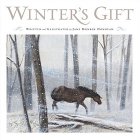 Summary Summary
The holiday season is difficult for an old man on a farm. Memories flood his
mind as he decorates the Christmas tree. The star that adorns the top of the
tree will not be placed there by his wife this year. And then, he hears a noise.
This story gently shows loneliness and despair turning into a rebirth
of the spirit giving meaning and purpose to life. After reading, you will know
that hope and happiness may come as a surprise.
Activities
- Use the questions and graphic organizer for students to identify the
story’s setting.
- -Where do you think the story takes place?
- -What are the clues (words or phrases) that tell you where?
_____________________________________
_____________________________________
_____________________________________
_____________________________________
|
Draw a picture of the setting. |
- Book Talk: Use the following questions to guide students in a brief
discussion about Winter’s Gift.
- -What are some ways you know how the old man is feeling?
- -Can you imagine what he is thinking?
- -What is the mood of the story? What words describe how he feels?

- Have students create snow pictures using white packing “peanuts”, or
cotton balls.
- A Star Shines Within Me – What do I do that makes me SHINE?
- Recreate the star pattern below and copy onto 9 x 12 yellow construction
paper. You will need to have the star placed as shown.
- Cut vertical and horizontal lines to open the star to the points.
- Glue the outer edges of the star square paper onto another color paper.
Students will write/draw on the backing paper under the pulled back flaps.
DO NOT GLUE THE FLAPS DOWN.

Websites
http://www.sleepingbearpress.com/authors_illustrators/jane_donovan.htm
- this is an informational page on the author/illustrator.
| 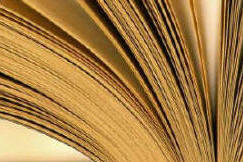


 Summary
Summary
 Summary
Summary
 Summary
Summary
 Summary
Summary
